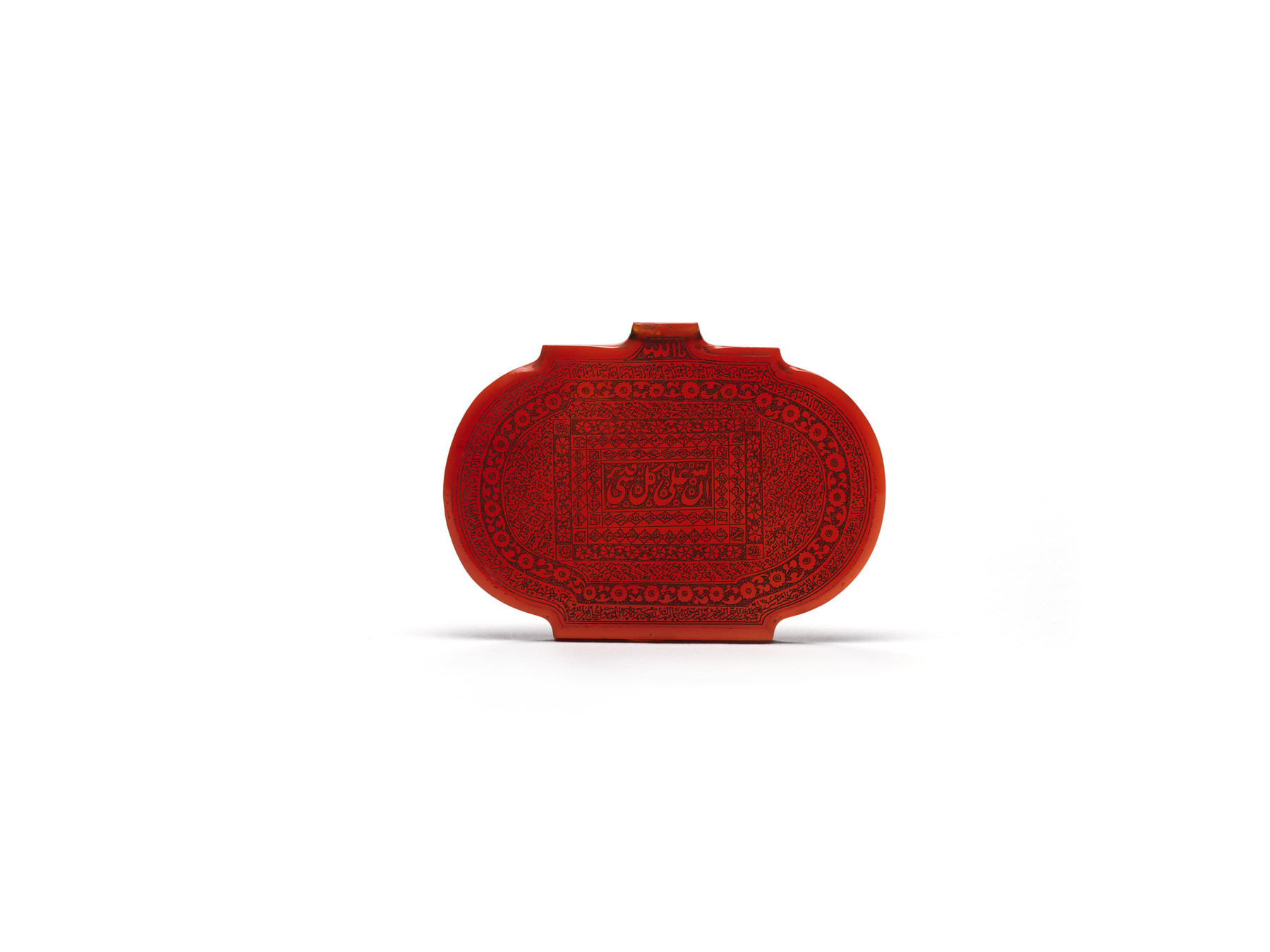Oval Amulet Pendant
(Islamic World )
Amulets are often worn on the body or hung in architectural spaces. Their purpose is to protect against ailments and other types of danger and to encourage success and fortitude. This 18th-century Iranian example is covered with micrographic writing, including verses from the Qur'an and the 99 Beautiful Names (al-asma al-husna) of God, which describe his divine attributes. Qur'anic verses are considered by some believers to have protective powers.
The most legible inscription, beginning at the top and continuing in the center panel, invokes God’s majesty: “Oh God, truly God is all-powerful in all things.”
Inscription
Provenance
Provenance (from the French provenir, 'to come from/forth') is the chronology of the ownership, custody, or location of a historical object. Learn more about provenance at the Walters.
Henry Walters, New York, [date of acquisition unknown] by purchase; Sadie Jones (Mrs. Henry Walters), New York, 1931, by inheritance; Joseph Brummer, New York, [date of acquisition unknown] by purchase; Walters Art Museum, 1942, by purchase.
Exhibitions
| 2010 | Poetry and Prayer: Islamic Manuscripts from the Walters Art Museum. The Walters Art Museum, Baltimore. |
Geographies
Iran (Place of Origin)
Measurements
H: 1 7/16 x W: 2 x D: 1/8 in. (3.6 x 5 x 0.3 cm)
Credit Line
Museum purchase [formerly part of the Walters Collection], 1942
Accession Number
In libraries, galleries, museums, and archives, an accession number is a unique identifier assigned to each object in the collection.
In libraries, galleries, museums, and archives, an accession number is a unique identifier assigned to each object in the collection.
42.1205






